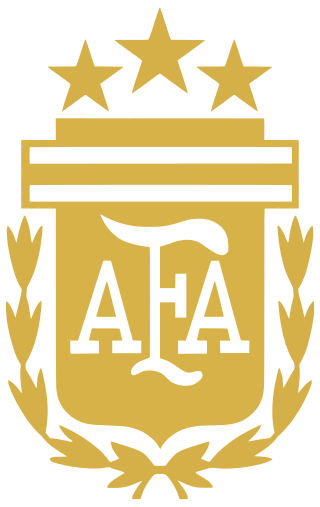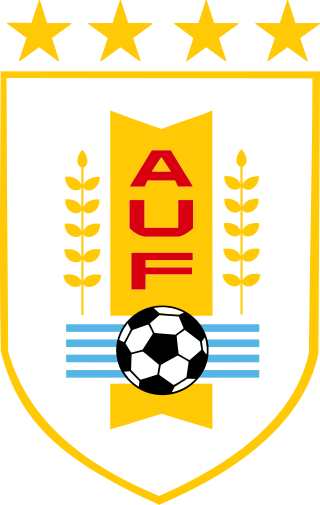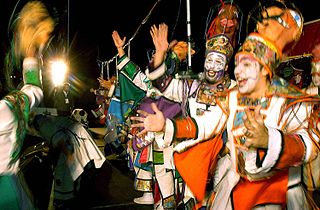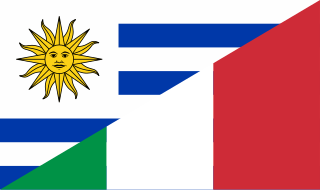
Uruguay, officially the Oriental Republic of Uruguay, is a country in South America. It shares borders with Argentina to its west and southwest and Brazil to its north and northeast, while bordering the Río de la Plata to the south and the Atlantic ocean to the southeast. It is part of the Southern Cone region of South America. Uruguay covers an area of approximately 176,215 square kilometres (68,037 sq mi) and has a population of around 3.4 million, of whom nearly 2 million live in the metropolitan area of its capital and largest city, Montevideo.

Uruguay is a country in the southeastern region of South America, bordering the Atlantic Ocean, between Argentina and Brazil. It is located in the Southern Hemisphere on the Atlantic seaboard of South America between 53 and 58 west longitude and 30 and 35 south latitude. It is bordered to the west by Argentina, on the north and northeast by Brazil, and on the southeast by the Atlantic Ocean, which makes up Uruguay's coast.

Montevideo is the capital and largest city of Uruguay. According to the 2011 census, the city proper has a population of 1,319,108 in an area of 201 square kilometers (78 sq mi). Montevideo is situated on the southern coast of the country, on the northeastern bank of the Río de la Plata.
The CONMEBOL Copa América, known until 1975 as the South American Football Championship, is the top men's football tournament contested among national teams from South America. It is the oldest still-running continental football competition, as well as the third most watched in the world. The competition determines the champions of South America. Since the 1990s, teams from North America and Asia have also been invited to compete.

The Argentina national football team represents Argentina in men's international football and is administered by the Argentine Football Association, the governing body for football in Argentina.

Enzo Francescoli Uriarte, nicknamed "El Príncipe", is a Uruguayan former footballer who played as an attacking midfielder. He is regarded as one of the best playmakers of his generation and as one of Uruguay's and South America's greatest ever players. He represented his nation at two FIFA World Cups, in 1986 and 1990, also winning the Copa América in 1983, 1987 and 1995.

The culture of Uruguay is diverse since the nation's population is one of multicultural origins. Modern Uruguayan culture is known to be heavily European influenced, mostly by the contribution of its alternating conquerors, Spain and Portugal, and from the large numbers of immigrants who arrived in the country from the 19th century onwards.

The Uruguay national football team represents Uruguay in international men's football, and is controlled by the Uruguayan Football Association, the governing body for football in Uruguay. The national team is commonly referred to as La Celeste.

Murga is a form of popular musical theatre performed in Argentina, Panama, Spain and Uruguay during the Carnival season. Murga groups also operate in the Buenos Aires Carnival, though to a lesser extent than in Montevideo; the Argentinian murga is more centred on dancing and less on vocals than the Uruguayan one. Uruguayan murga has a counterpart in Cadiz, Spain from which it is derived, the chirigota, but over time the two have diverged into distinct forms.
Liberalism in Uruguay organized itself in the nineteenth century in the Colorado Party, nowadays an heterogeneous party, divided in factions ranging from Moderate to social democracy. Its general profile is more or less liberal. They can differ very much in political profile. Liberal forces are not only active in the Colorado Party and this party has also moderate factions.

Club Nacional de Football is a Uruguayan professional sports club based in Montevideo.

The match between Uruguay and Brazil was the decisive match of the final stage at the 1950 FIFA World Cup. It was played at the Maracanã Stadium in the then-capital of Brazil, Rio de Janeiro, on 16 July 1950.
The Uruguayan Football Association is the governing body of football in Uruguay. It was founded in 1900, as The Uruguayan Association Football League, and affiliated to FIFA in 1923. It is a founding member of CONMEBOL and is in charge of the national men's team and the national women's team, as well as the Uruguayan football league system.

Luis Alberto Suárez Díaz is a Uruguayan professional footballer who plays as a striker for Major League Soccer club Inter Miami and the Uruguay national team. Nicknamed "El Pistolero", he is regarded as one of the best players of his generation and one of the greatest strikers of all time. Individually, he has won two European Golden Shoes, an Eredivisie Golden Boot, a Premier League Golden Boot and a Pichichi Trophy. He has scored over 500 career goals for club and country.
Uruguayan Americans are Americans of Uruguayan ancestry or birth. The American Community Survey of 2006 estimated the Uruguayan American population to number 50,538, a figure that notably increased a decade later.

Uruguayans are people identified with the country of Uruguay, through citizenship or descent. Uruguay is home to people of different ethnic origins. As a result, many Uruguayans do not equate their nationality with ethnicity, but with citizenship and their allegiance to Uruguay. Colloquially, primarily among other Spanish-speaking Latin American nations, Uruguayans are also referred to as "orientals [as in Easterners]".
According to public opinion polls, irreligion in Uruguay ranges from 30 to 40 to over 47 percent of the population. Uruguay has been the least-religious country in South America due to nineteenth-century political events influenced by positivism, secularism, and other beliefs held by intellectual Europeans. The resistance of the indigenous population to evangelization, which prevented the establishment of religion during the colonial era, has also been influential. According to Nestor DaCosta (2003), irreligion has historically been a feature of Uruguayan identity.

Uruguayans in Italy are people born in Uruguay who emigrated to Italy or Italian citizens of Uruguayan descent.

Indigenous peoples in Uruguay or Native Uruguayans, are the peoples who have historically lived in the modern state of Uruguay. Because of colonial practices, disease and active exclusion, only a very small share of the population is aware of the country's indigenous history or has known indigenous ancestry.
Dominican Uruguayans are people born in the Dominican Republic who live in Uruguay, or Uruguayan-born people of Dominican descent.












